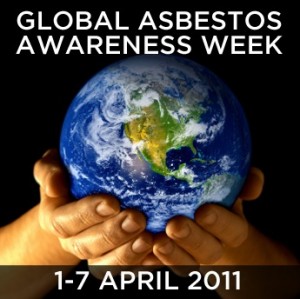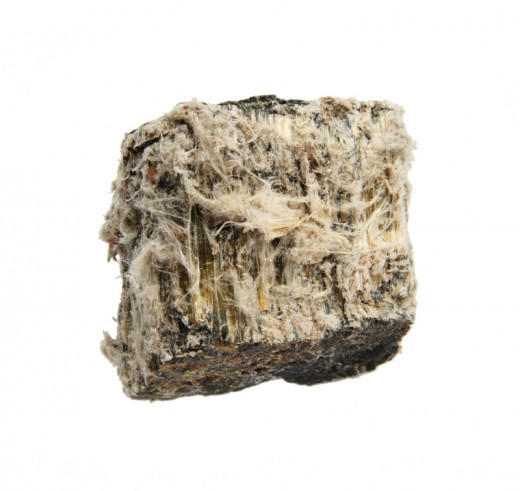Asbestos Awareness

GAAW - What Does it Mean?
April 1 – 7 2011 is Global Asbestos Awareness Week (GAAW). The purpose of GAAW is to educate people on the dangers of asbestos – something so many people incorrectly perceive to be an occupational hazard that was put to bed with the global trend towards the banning of asbestos in recent years.
Asbestos was for many years haled as the “best thing since sliced bread” in various industries, including the construction industry. It had the ability to strengthen buildings yet it was light, inexpensive and readily available. Its natural fire-resisting characteristics as well as its insulating properties made it extremely popular and asbestos was used extensively in the building of hospitals, schools and residential homes.
During its peak asbestos had more than 3000 different applications. Employees in many different industries other than the asbestos mining industry were exposed to asbestos fibres. These include motor vehicle manufacturing plants, harbours, shipyards, construction worksites as well as asbestos products manufacturing plants.
The Organisers of GAAW
On 1 April 2004 Linda Reinstein and Doug Larkin founded the Asbestos Disease Awareness Organisation after both losing loved ones to Asbestos Related Disorders. ADAO is an independent global organisation which strives to raise public awareness on the dangers associated with asbestos exposure
Linda Reinstein is the widow of Alan Reinstein who died on May 22 2006 after being diagnosed with the asbestos-related mesothelioma.
One of the primary goals of ADAO is to see the banning of the use of asbestos world-wide. Other goals include becoming a united voice for all asbestos victims and educating the public as well as the medical community on asbestos related diseases. ADAO supports any research that may lead to prevention, early detection and cures for ARD.
Linda Reinstein
Daughter - Emily Reinstein
What Was Discussed on Day 1
Although asbestos is a known carcinogen the United States has as yet not banned asbestos and Canada continues to mine and export asbestos to developing countries.
Taking into consideration that in the United States alone 10,000 people die each year as a direct result of exposure to the deadly asbestos fibres it is unconceivable why a country would continue the use or mining of this product. According to the WHO it is estimated that 107,000 people die annually from asbestos related diseases such as mesothelioma, asbestosis and asbestos-related lung cancer.
It can take up to 40 years before a person exposed to asbestos is diagnosed with any of the asbestos related disorders (ARD). The best advice to anyone who has been, is, or may in the future be, exposed to asbestos fibres, particularly if the exposure is for a prolonged period of time, is to educate oneself with regards to the prevention of asbestos exposure.
Famous People Are not Immune to ARD
- Famous Profiles ADAO Asbestos Disease Awareness Organization
Asbestos Related Disorders know no boundaries. Here are examples of famous people who have succumbed to ARD.
Global Asbestos Awareness Week 2011
- Exposed The Facts about Asbestos April 1 7, 2011 ADAO Asbestos Disease Awareness Organization
Diary of events during the current GAAW.

What is Asbestos?
Asbestos (the name originating from a Greek word meaning “inextinguishable) is the commercial name given to a set of six natural silicate minerals. The inherent characteristics of the long thin fibrous crystals found in these minerals caused asbestos fibre to gain popularity in various industries at the turn of the 19th century.
Asbestos fibre is heat- and chemical-resistant, a flame-retardant, has exceptional insulation properties, absorbs sound, is flexible and has a very high tensile strength. Coupled with all of these properties it is light and until countries started banning the use of asbestos it was readily available and inexpensive.
There are two distinct groups of minerals that can crystallize as asbestos fibre namely serpentine and amphibole. The most popular type of asbestos that is mined for its commercial value is Chrysotile (white asbestos) which is found in serpentine rock and mined extensively in Canada. Amosite (brown asbestos) and Crocidolite (blue asbestos) are amphiboles and the largest deposits were found in South Africa and Australia. Amphiboles are more easily turned to dust with finger pressure (known as “friable) and therefore more hazardous than Chrysotile which is very flexible. The level of friability determines the amount of asbestos fibres that can be released into the atmosphere and cause health problems when people inhale these fibres.
Asbestos in the World Today
Both the medical and scientific communities worldwide generally agree that there are no safe types of asbestos and that there is no safe level of exposure to asbestos. Despite this asbestos is still being produced, sold and used in several countries today and the annual production of asbestos exceeds 2million tons.
The leading producers of asbestos in the world today are China, Canada and Russia and the leading consumers are China, Russia and India.
Asbestos-cement pipes, sheets and water storage tanks account for the vast majority of the asbestos being used in the world today.
Despite evidence that workers exposed to Chrysotile asbestos have an increased risk of developing asbestos related disorders, including mesothelioma, there are still people trying to convince the general public that this type of asbestos is safe if handled properly. This may or may not be the case. Either way if one takes into consideration that there are safer substitutes for asbestos then it seems preposterous that there are still countries that refuse to place a total ban on asbestos products.
Which Industries are Typically High Risk for Asbestos Related Disorders?
Employees in the construction, manufacturing and mining industries have an elevated risk of asbestos exposure.
In the construction industry electricians, plumbers, painters and roofers have a disproportionately high exposure to asbestos fibres due to the fact that many older homes where construction or renovation takes place may still be fitted with textured paints, asbestos shingles or pipe and furnace insulation containing asbestos. Any renovations or demolition of older homes must be carried out under strict supervision using the correct protective clothing, goggles, ventilators and other safety equipment. This will minimize the exposure to asbestos fibres.
Manufacturing plants producing building materials, insulation, automobile parts and various other products using asbestos all pose serious threats of excessive exposure to asbestos fibres. People who were employed in any of these manufacturing plants have an increased risk of developing asbestos related disorders.
Asbestos miners who were employed by asbestos mines before 1989 are those who were subjected to the highest occupational health risk. Most asbestos related disorders can take up to 50 years before any symptoms present themselves but may appear much sooner.







